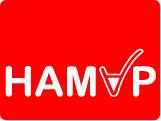HAMAP rule MF_04069
General rule information
[?]
| PURL | https://purl.expasy.org/hamap/rule/MF_04069 |
| Accession | MF_04069 |
| Dates | 11-APR-2017 (Created)
14-JAN-2025 (Last updated, Version 11) |
| Name | INFV_M2 |
| Scope(s) |
Viruses Orthomyxoviridae |
| Template(s) | P06821; [ Recover all ] |
| Triggered by |
HAMAP; MF_04069 (Get profile general information and statistics) |
Propagated annotation
[?]
Identifier, protein and gene names
[?]
| Identifier | M2 |
| Protein name | RecName: Full=Matrix protein 2; AltName: Full=Proton channel protein M2; |
| Gene name | Name=M; |
Comments
[?]
| FUNCTION | Forms a proton-selective ion channel that is necessary for the efficient release of the viral genome during virus entry. After attaching to the cell surface, the virion enters the cell by endocytosis. Acidification of the endosome triggers M2 ion channel activity. The influx of protons into virion interior is believed to disrupt interactions between the viral ribonucleoprotein (RNP), matrix protein 1 (M1), and lipid bilayers, thereby freeing the viral genome from interaction with viral proteins and enabling RNA segments to migrate to the host cell nucleus, where influenza virus RNA transcription and replication occur. Also plays a role in viral proteins secretory pathway. Elevates the intravesicular pH of normally acidic compartments, such as trans-Golgi network, preventing newly formed hemagglutinin from premature switching to the fusion-active conformation. |
| SUBUNIT | Homotetramer; composed of two disulfide-linked dimers held together by non-covalent interactions. May interact with matrix protein 1. |
| SUBCELLULAR LOCATION | Virion membrane. Host apical cell membrane; Single-pass type III membrane protein. Note=Abundantly expressed at the apical plasma membrane in infected polarized epithelial cells, in close proximity to budding and assembled virions. Minor component of virions (only 16-20 molecules/virion). |
| DOMAIN | Cytoplasmic tail plays an important role in virion assembly and morphogenesis. |
| MISCELLANEOUS | When the channel is activated, one or more imidazole moities of #{His-37} probably become bi-protonated. |
| SIMILARITY | Belongs to the influenza viruses matrix protein M2 family. |
Keywords
[?]
Gene Ontology
[?]
| GO:0020002; Cellular component:host cell plasma membrane |
| GO:0016020; Cellular component:membrane |
| GO:0055036; Cellular component:virion membrane |
| GO:0015078; Molecular function:proton transmembrane transporter activity |
| GO:0005216; Molecular function:monoatomic ion channel activity |
| GO:0044694; Biological process:symbiont genome entry into host cell via pore formation in plasma membrane |
| GO:0051259; Biological process:protein complex oligomerization |
| GO:0140321; Biological process:symbiont-mediated suppression of host autophagy |
Cross-references
[?]
| Pfam | PF00599; Flu_M2; 1; |
| General | Transmembrane; -; 1; |
Features
[?]
| From: M2_I34A1 (P06821) | ||||||||||||
| Key | From | To | Description | Tag | Condition | FTGroup | ||||||
| TOPO_DOM | Nter | 22 | /note="Virion surface" | |||||||||
| TRANSMEM | 23 | 43 | /note="Helical; Signal-anchor for type III membrane protein" | |||||||||
| TOPO_DOM | 44 | Cter | /note="Intravirion" | |||||||||
| SITE | 37 | 37 | /note="Essential for channel activity, possibly by being protonated during channel activation, and by forming the channel gate and the selective filter" | H | ||||||||
| SITE | 41 | 41 | /note="Seems to be involved in pH gating" | W | ||||||||
| MOD_RES | 64 | 64 | /note="Phosphoserine; by host" | S | ||||||||
| MOD_RES | 82 | 82 | /note="Phosphoserine; by host" | S | ||||||||
| MOD_RES | 93 | 93 | /note="Phosphoserine; by host" | S | ||||||||
| LIPID | 50 | 50 | /note="S-palmitoyl cysteine; by host" | C | ||||||||
| CARBOHYD | 20 | 20 | /note="N-linked (GlcNAc...) asparagine; by host" | Carbo | N | |||||||
| DISULFID | 17 | 17 | /note="Interchain (with #{Cys-17})" | C | ||||||||
| DISULFID | 19 | 19 | /note="Interchain (with #{Cys-19})" | C | ||||||||
Additional information
[?]
| Size range | 96-100 amino acids |
| Related rules |
None |
| Fusion | Nter: None Cter: None |
